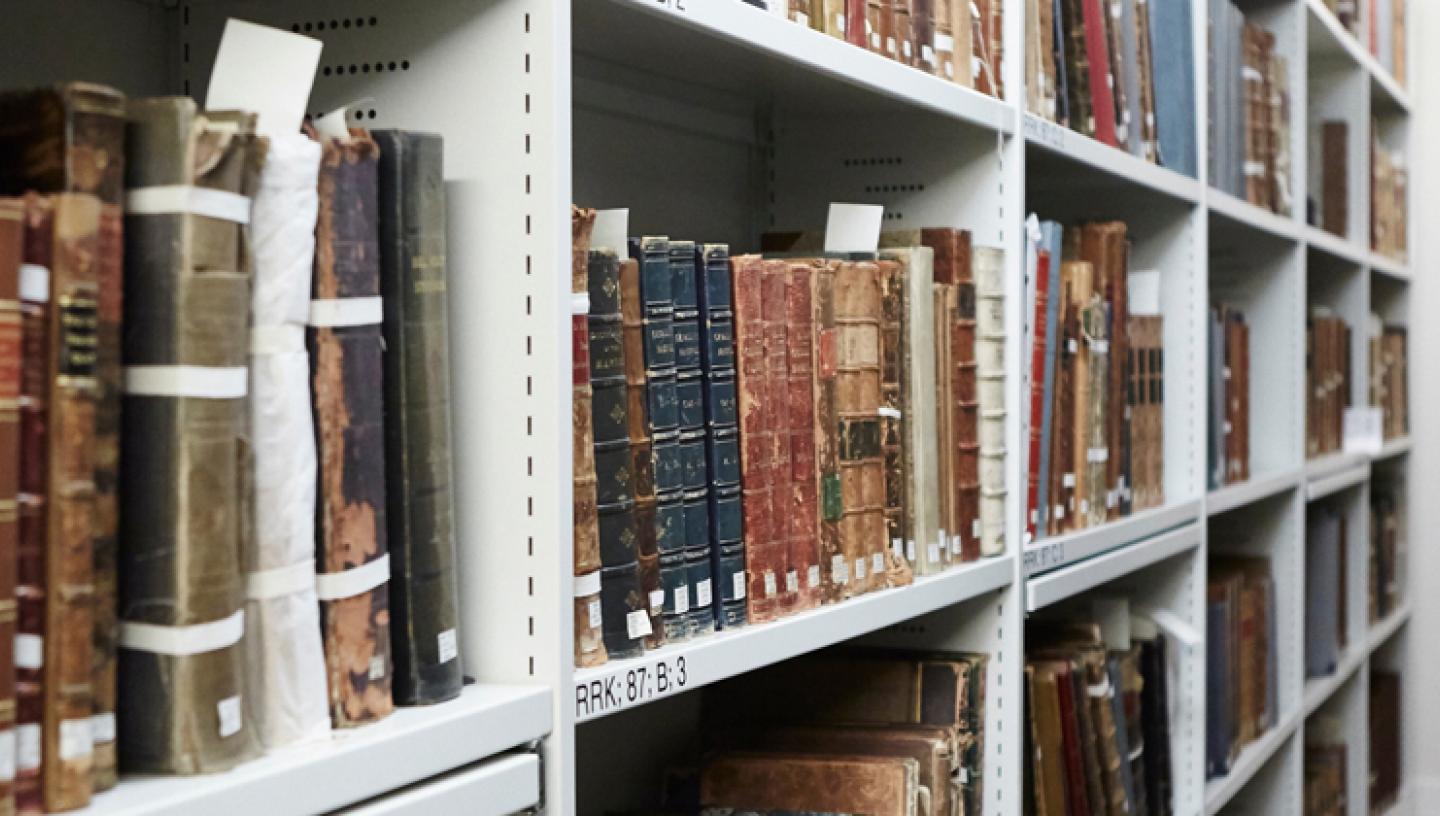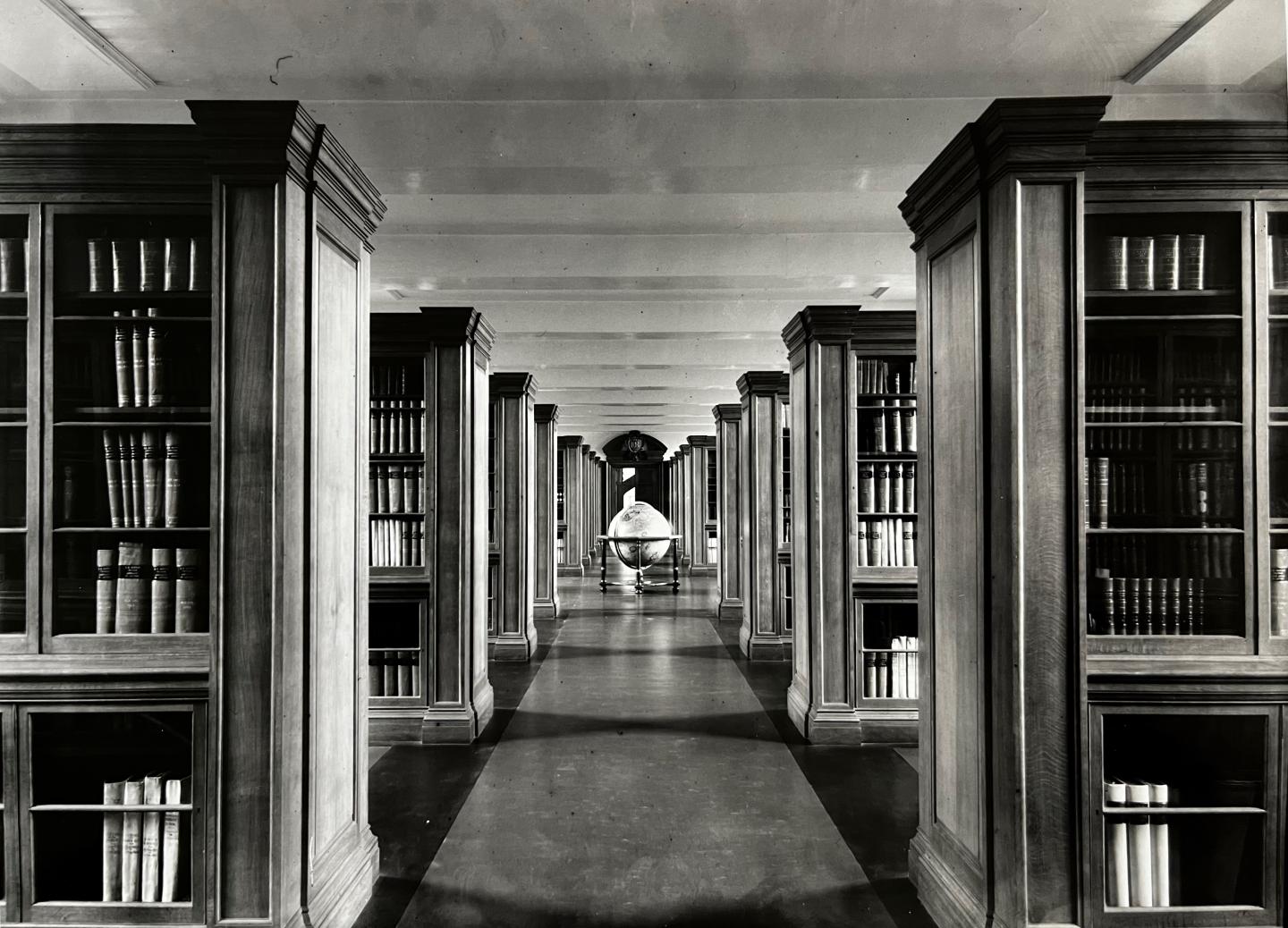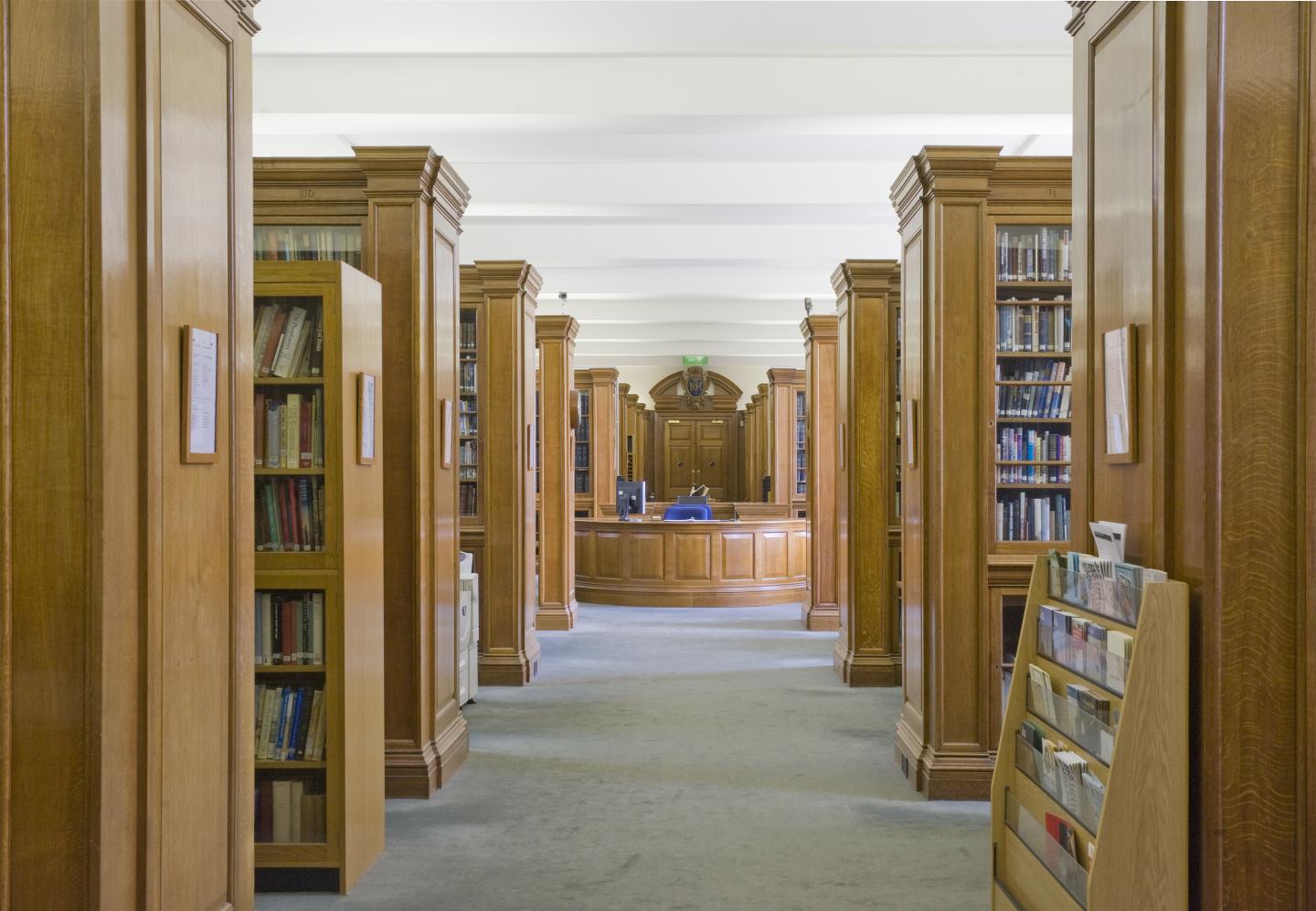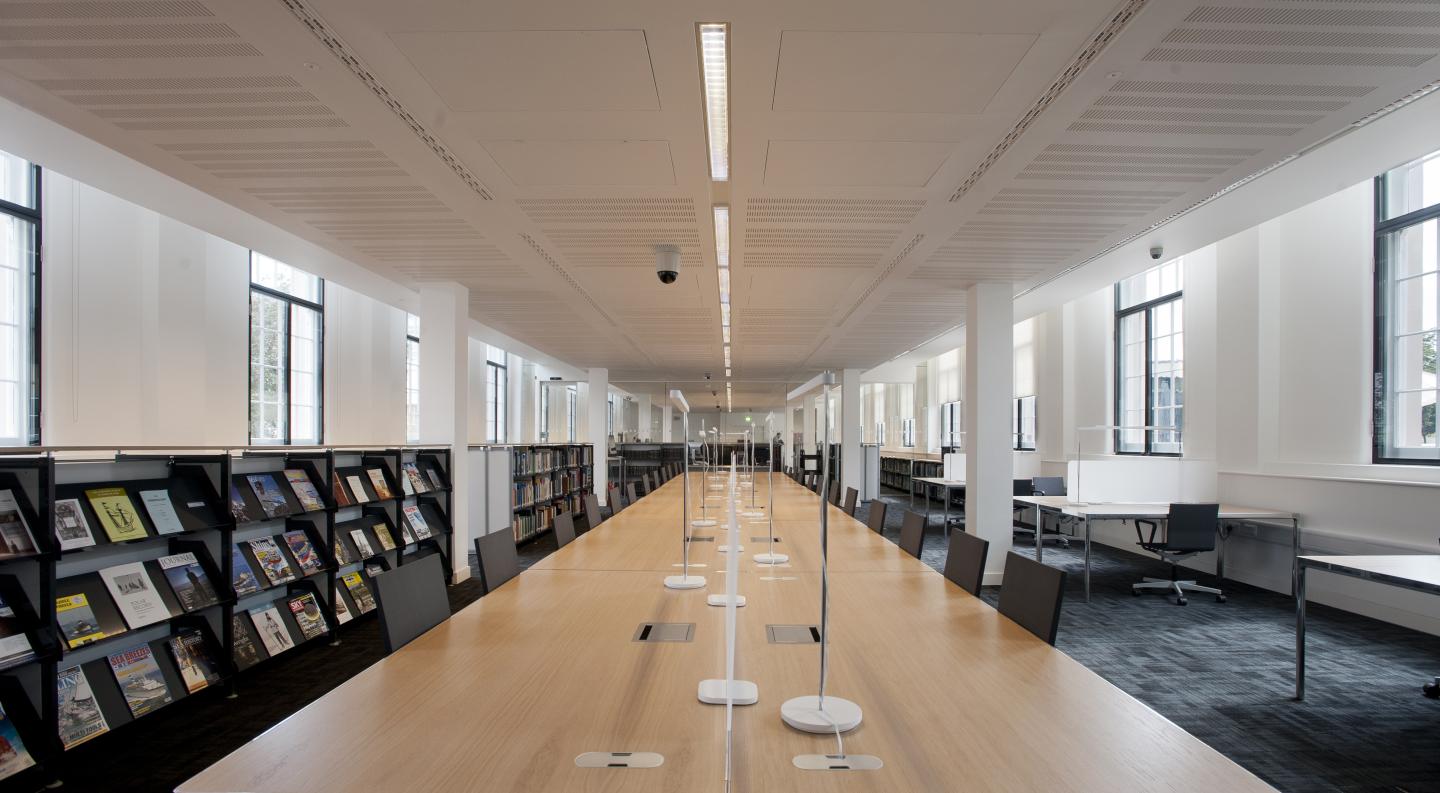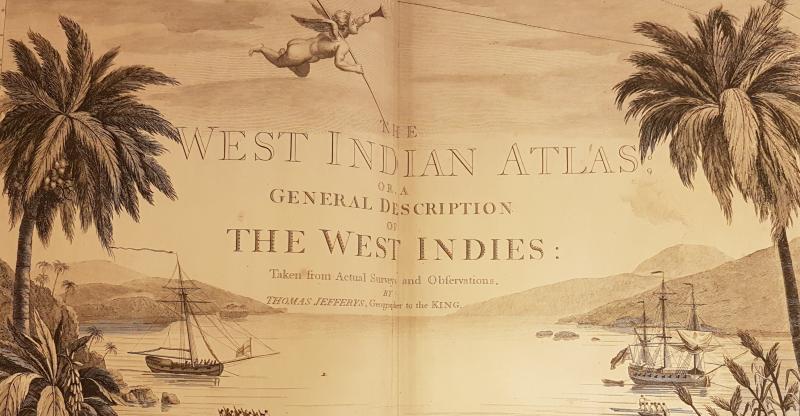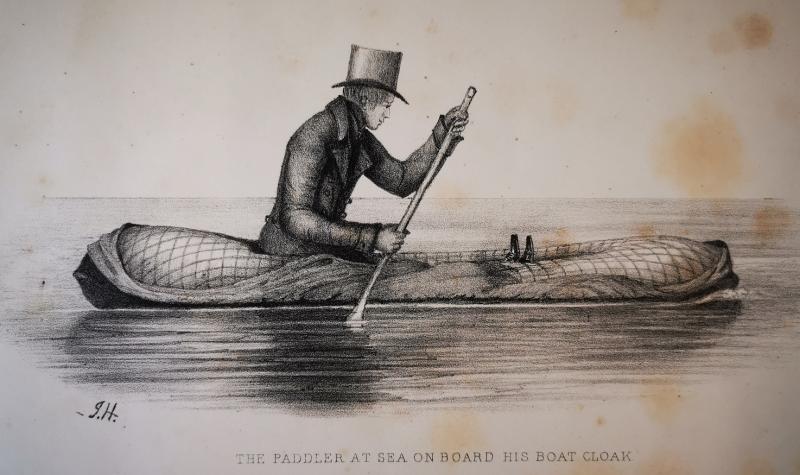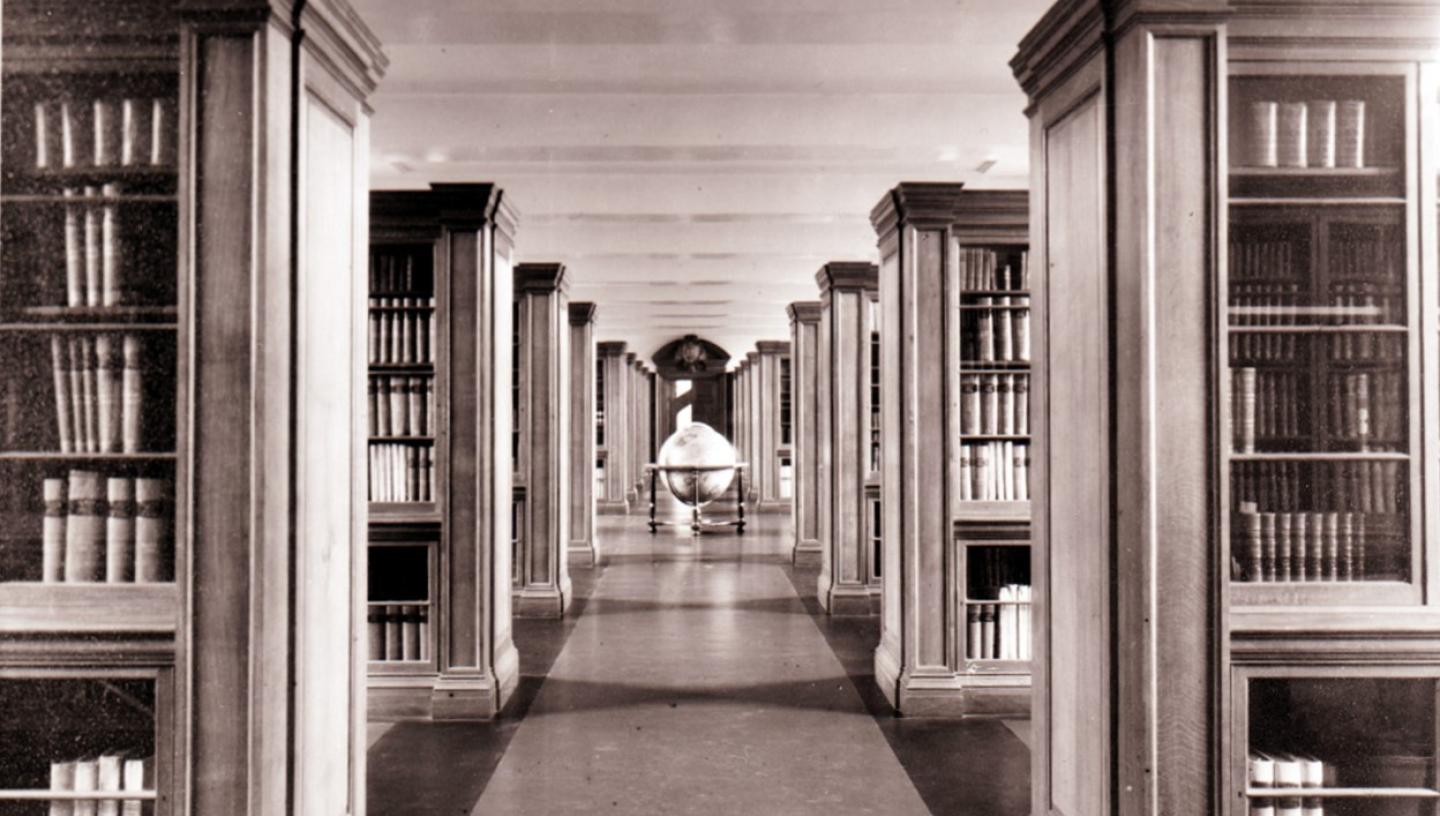
04 Apr 2022
Named for the Glaswegian shipowner Sir James Caird, Bt. (1864-1954), the Caird Library and Archive has been facilitating research into maritime endeavour for over eighty years. Today it is the largest maritime reference library in the world.
by Shane McMurray, Library Assistant
The origins of the Caird Library
In 1928 Caird acquired the Macpherson Collection on behalf of the Society for Nautical Research and presented it to the nation. Comprised of over 11,000 prints, rare books, manuscripts, maps, and charts, it is the National Maritime Museum’s founding collection. Originally catalogued by the Museum’s first Librarian, Thomas Emanuel, much of it is available to view in the Library today.
The establishment of a library was of particular interest to Sir Geoffrey Callender, the Museum’s first director. As a naval historian the project was very close to his heart. He considered it to be the “workshop” of the Museum, where people could discover, connect, and further their knowledge of our shared maritime past.
Where Callender had the vision, Caird had the means. During the 1930s Caird provided £74,180 (equivalent to £5.2m today) to transform the recently vacated Royal Hospital School into suitable premises for the Museum – with £4,050 (£292,714) earmarked for the Library works.
The opening of the Caird Library and the Second World War
Opening in 1937, the Library had only been operating for a short while when the Second World War descended in 1939.
Museum collections were secured in the basements to protect them from bombing raids. While many other museum libraries had closed, the Library continued to offer its services. By 1942 the Museum had shut entirely, making way for the Admiralty, and would not fully reopen until 1946.
Re-organising the collections
The postwar years was a period of considerable upheaval and re-organisation, while the Museum found its footing and modernised its practices. As part of a wider move by the Museum to embrace computerisation, in 1976 systematic classification and cataloguing of the library and archive collections began.
Library material was organised according to Universal Decimal Classification (UDC), noted for its flexibility and subject depth compared to the more famous Dewey Decimal. UDC was already in use at the nearby Library of the Royal Naval College, where Sir Geoffrey Callender was Professor of History and English.
Modernising the Caird Library
With the dawn of the Internet, the E-library was established by the entrance to allow visitors computer access. Users could explore the collections electronically by searching the catalogues, which had been made available online. Previously a card catalogue was used, organised by author and title, with shelf references included to help locate items. The catalogue was also available on microfiche.
From 2008 work began on expanding the Museum, and the Library was busy preparing to move and decant its collections into the new Sammy Ofer Wing then under construction. Completed in 2011, the new Library Reading Room was opened by the late Prince Philip, Duke of Edinburgh. It then provided valuable office space for the equestrian media covering the London 2012 Olympic Games.
During relocation the imposing freestanding bookcases, reputedly sourced from oak trees on Caird’s own estate, were removed to the Royal Armouries in Leeds. Some remnants remain however and can be seen in the Pacific Encounters gallery today, where the Library was originally situated.
Sir Edwin Lutyens’s Caird Rotunda, which once served as the entrance to the old library, remains, along with Caird’s bust by Sir William Reid Dick. Dick’s first attempt at Caird’s likeness (which was heavily criticised for its weak chin, amongst other things) now sits in the new Library.
This was a period of modernisation for the Caird Library & Archive, transforming it into a research and information service fit for the 21st century.
Digitising the collections
Since then, our digitisation program has come to the fore, with some of the more in-demand collections becoming more widely accessible. Major records now available online include:
2012 – Masters & Mates Certificates
2013 – Board of Longitude Papers
2015 – 1915 Crew Lists
2016 – Merchant Seamen’s Death Index
2017 – Dreadnought Seamen’s Hospital Admissions & Discharges
2019 – Journal of Edward Barlow
Through partnerships with The National Archives, Ancestry, Cambridge University, Arts & Humanities Research Council, Jisc, and others, we have been able to expand access on a global scale. Despite the impact of COVID-19, digitising our collections continues.
Between March 2020 and July 2021, Library and Archive staff were embarked on a mixture of furlough, office, or home working. A limited two-day service was established in August 2020, expanding to the current four-day service in July 2021. By October 2021 staff had answered 1446 enquiries, produced 2297 items for 444 visitors and fulfilled 267 reprographic requests.
To learn more about the Caird Library and its collections search our online catalogues, visit our webpage, or drop in and speak to a member of staff.
Further Reading
Knight, R.J.B. (Ed.). Guide to the Manuscripts in the National Maritime Museum. London: Mansell, 1977-1980 (2 Vols).
Littlewood, Kevin & Beverly Bulter. Of Ships and Stars: Maritime Heritage and the Founding of the National Maritime Museum. Greenwich: Athlone Press, 1998.
National Maritime Museum: Catalogue of the Library. London: HMSO, 1968-1976 (7 Vols).
